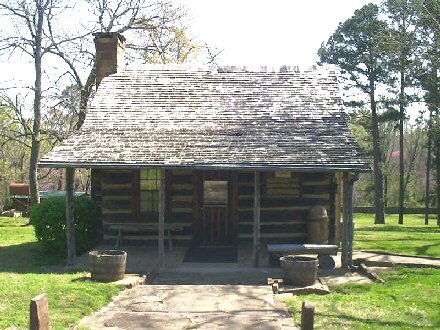
Sequoyah built this one-room log cabin in 1829 shortly after moving to Oklahoma. The cabin became the property of the Oklahoma Historical Society in 1936, and the cabin was enclosed in a stone cover building as a project of the Works Progress Administration. In 1966 the Secretary of the Interior designated the site as a National Historic Landmark.
In 1809 Sequoyah began experimenting with a written alphabet for the Cherokee language. After many years of experimentation, Sequoyah realized the Cherokee language is composed of a set number of recurring sounds. With this insight he identified the sounds and created a symbol for each sound, producing a syllabary. By 1821 his work was complete. When Sequoyah demonstrated that he and his daughter, Ahuoka (Ah-yo-ka), could communicate by reading written messages, the teaching of the syllabary spread.






